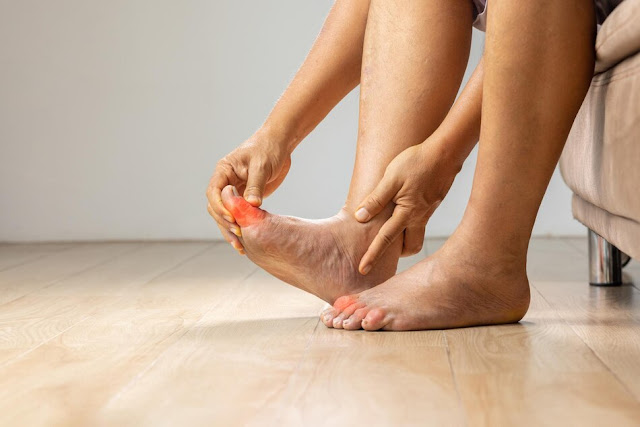A chronic illness that affects millions of individuals globally is diabetes. The emergence of foot ulcers is one of the most dangerous effects of diabetes. If left untreated, these ulcers can result in serious infections and, in certain situations, amputation. It's critical to identify the symptoms of a diabetic foot ulcer to take appropriate diabetic wound treatment in Coimbatore quickly and stop additional complications. This post will explain how to recognize the warning signs of a diabetic foot ulcer and provide prevention tips.
Understanding Diabetic Foot Ulcers
Open wounds or sores that frequently appear on the bottom of the foot are known as diabetic foot ulcers. A number of variables contribute to their development, such as impaired immune system performance, neuropathy, and poor circulation. Diabetes patients may also have elevated blood sugar levels, which can hinder the body's natural healing process and increase the risk of infection.
Signs and Symptoms
Redness and Swelling: The affected region surrounding diabetic foot ulcers is frequently red and swollen. There can be warmth to the touch in addition to this.
Pain or Discomfort: At the location of the ulcer, some people may feel pain or discomfort. However, not all ulcers will hurt because neuropathy can cause the foot to lose feeling.
Pus or Fluid discharge: If the ulcer has become infected, there may be pus or fluid discharge visible. This is a serious indication that needs to be addressed by a doctor right away.
Odor: A bad smell coming from the foot could be a sign of an infection. When bacteria grow in a wound, this happens.
Slow Healing: Diabetic ulcers usually take a long time to heal, if at all. A diabetic ulcer could be the cause of a foot wound that doesn't seem to be healing over time.
Alterations in Skin Texture or Color: The skin surrounding the ulcer may have a dry, glossy, or discolored appearance. The skin may even get callused or thickened in certain situations.
Steps to Take if You Suspect a Diabetic Foot Ulcer
Seek Medical Assistance: Seeking medical assistance as soon as possible is crucial if you observe any signs or symptoms of a diabetic foot ulcer. Your medical professional can examine the wound, identify any infection, and suggest the best course of action.
Keep the Wound Clean and Dry: Wash your feet every day with warm water and a light soap to maintain proper foot hygiene. Make sure you completely dry them, especially the areas in between your toes.
Protect the Wound: To prevent more harm and lower the chance of infection, keep the ulcer covered with a fresh bandage or dressing.
Offload Pressure: In order to encourage healing in diabetic foot ulcers, pressure release is essential. To relieve pressure from the ulcer, try not to place any weight on the afflicted foot and think about wearing specialised footwear or orthotic equipment.
Practitioner Improving wound healing and lowering the chance of complications can be achieved by maintaining blood sugar levels within a desired range. Pay close attention to your diabetes treatment plan and take regular blood sugar readings.
Follow Up with Your Healthcare practitioner: Keep track of the ulcer's development and modify your treatment strategy as needed by attending all of your planned follow-up sessions with a diabetic wound specialist in Coimbatore Conclusion
It's critical to identify the symptoms of a diabetic foot ulcer to avoid major consequences like infections and amputations. It's critical to routinely examine your feet if you have diabetes, and to get medical help if you spot any symptoms of a foot ulcer. By managing your diabetes and adopting proactive measures to take care of your feet, you can lower your risk of diabetic foot ulcers and preserve your general health and well-being.




Comments
Post a Comment